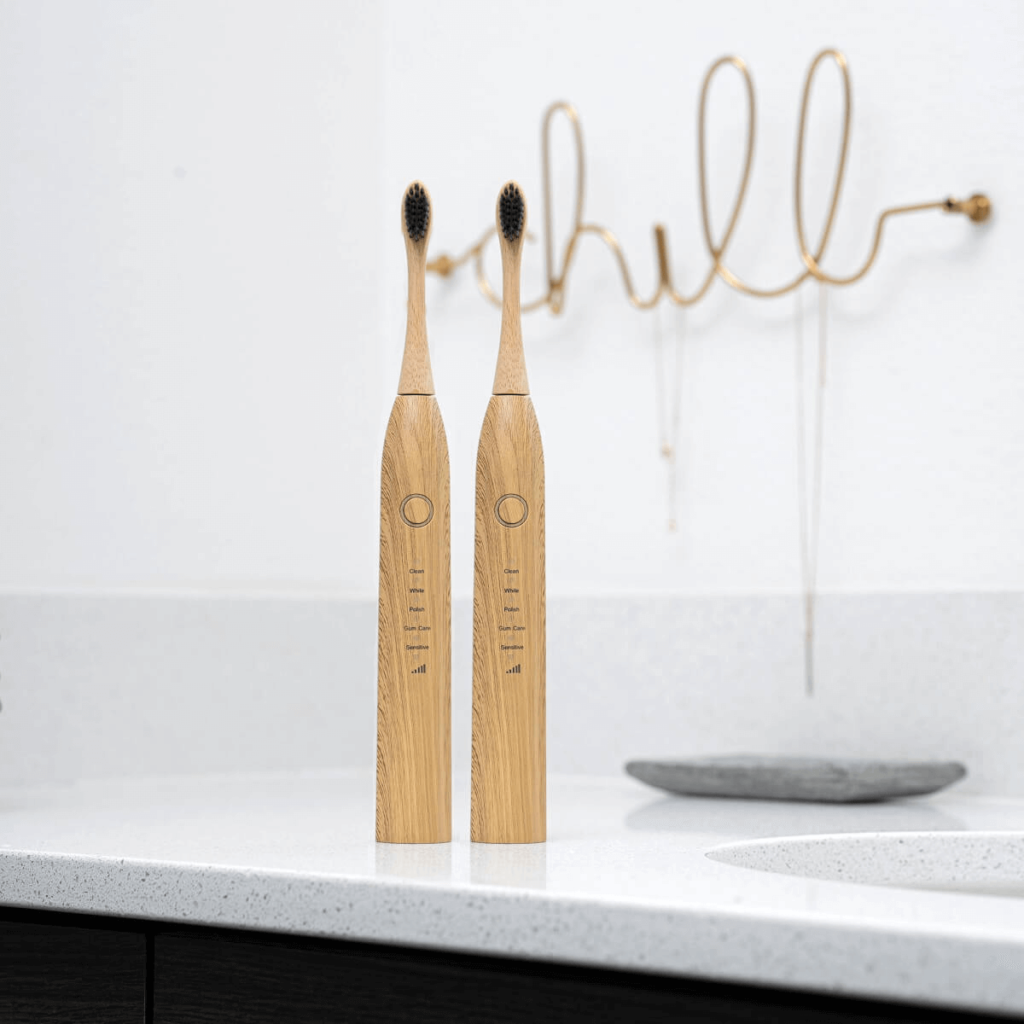As we all know, electric toothbrushes are dental cleaning equipment. When used properly, may improve tooth health and enhance blood circulation in the gums. And eventually, become more conductive to medicine absorption. A dry battery, tiny DC motors, battery boxes, toothbrush heads, steel shields, and sleeves are its parts. Electric toothbrushes will also fail since they are electrical devices.
Thus, what are the two most prevalent electric toothbrush flaws? Let us just take a good look below.
1. The battery has been put in incorrectly. The battery in your new electric toothbrush may be placed incorrectly if it doesn’t respond when you click the open button. Carefully inspect the positive and negative electrodes of the battery. These are usually indicated by the position in which the batteries are mounted.
2. The battery has run out. It may be because the electric toothbrush hasn’t been charged in a while. The power should be drained if it’s just a battery-powered electric toothbrush. Always make sure to recharge or replace the battery in your electric toothbrush.
3. The revolving portion has become static. Remove the toothbrush heads to examine whether they can spin. Especially if the connector between the toothbrush head and the electrical toothbrushes is stuck. The rotors get stuck when they can revolve. Just make sure the electric toothbrush is clean.
4. There is a problem with the switch button or with the other components. If such an electric toothbrush is broken, it is not advised that you fix it by yourself. It’s more recommendable to send them to the after-sales services for repair. If you don’t want to repair it, you may just replace it.
The electric toothbrush turns on but does not function.
1. Whenever it has insufficient power. The power of an electric toothbrush is insufficient to operate the motor’s functions. As a result, the brush will still not vibrate.
2. Its body and head are glued together. In this situation, the brush head is frequently placed improperly. Or maybe a non-original brush head is utilized, resulting in brush head and body insufficiency and jamming. To solve the problem, remove the brush head and then plug it back in to test whether it vibrates. Or the least you can do is to buy a new one.
3. The circuit board was soaked in water. Water has gotten into the mainboard or circuit. As a consequence, the motor is unable to start. While its LED indicator is unaffected, it will continue to cycle on and off.
4. It’s not that functional and effective. Software issues or crashes may develop. As a result, they’ll have complicated architecture and a mix of soft and strong bristles. There is a case when the light is on but no vibration is present. Before leaving the manufacturer, it functioned well.
What is the best way to clean an electric toothbrush?
There are certain ways to clean an electric toothbrush after using it. Here it is below.
Before each usage, splash boiled water out over the area. This removes microorganisms that have accumulated on the toothbrush after brushing. It also removes any new germs that may have accumulated between uses. For the majority of people, sanitizing a toothbrush between uses is as simple as running it under hot water. Pour boiled water over the head of your toothbrush lightly before adding toothpaste. The water must be sufficiently heated to generate steam.
Soak your electric toothbrush in an antimicrobial mouthwash for a few minutes. You can dip your toothbrushes in an antibacterial mouthwash. Especially when a hot water rinse is not enough to offer you peace of mind. Please remember that these mouthwashes often include harsh compounds that cause bristles to break and wear out faster. After each brushing, place your toothbrush, head down, in a small cup of mouthwash for approximately 2 minutes.
Use a denture cleanser. You may disinfect your toothbrush using a denture washing solution as well. Antimicrobial compounds in denture cleaner target germs and plaque that form in your mouth. Once you’ve used denture cleaner on your dentures, never use it again. To get your toothbrush particularly clean, dissolve half a cleaning tablet in a cup of hot water and put it in for 90 seconds.
Use an electric toothbrush with UV light sanitizer. You may also buy a toothbrush sanitizer that uses ultraviolet light to kill bacteria.
You can also use a toothpaste dispenser. There’s a danger that your toothbrush and the toothpaste tube may make contact and transmit germs whenever you put toothpaste on your toothbrush. To decrease the possibility of cross-contamination, consider using a toothpaste pumping applicator.
Additional techniques to keep a toothbrush hygienic:
It should be kept in a daily-changing concentrated solution. Keeping your toothbrush in a tiny cup of hydrogen peroxide is a cost-effective technique to prevent the growth of bacteria.
Avoid keeping toothbrushes next to each other. If you have a large extended family, place every toothbrush a couple of meters away from one another.
ü, Keep it away from the toilet as much as possible. A “toilet plume” phenomenon occurs when feces rise into the air whenever you flush the toilet. This plume distributes hazardous bacteria throughout your bathroom’s surfaces, especially your toothbrush. By placing your toothbrush in a medical cabinet with the doors locked, you may keep harmful bacteria from infecting it. Alternatively, place your toothbrush as far away from the toilet as possible.
ü Holders and covers for toothbrushes should be cleaned. Microbes on your toothbrush can contaminate any toothbrush coverings or storage containers you are using to store it. To prevent hazardous germs from getting hold, it’s important to clean any toothbrush covers and containers every two weeks. Covering your toothbrush isn’t required, but if you do, make sure to let it air dry first. If you cover a soaked toothbrush, germs will develop on the bristles.
When should you get a new toothbrush?
Simply replacing your toothbrush is sometimes the best method to ensure you’re using a clean one. As a general guideline, you should replace your toothbrush or toothbrush head every three to four weeks. You must also toss away your toothbrush if you find yourself in any of the following situations:
1. The bristles have become frayed. Remember, your toothbrush won’t clean your teeth as well if the bristles are broken or ragged.
2. A member of your family is ill. Discontinue use when you or anybody in your home has had an infectious ailment.
3. You are sharing your toothbrush with someone else. If others have used your toothbrush, you won’t be able to thoroughly clean it. Everybody’s oral flora is different. You shouldn’t be cleaning microorganisms from somebody else’s mouth with yours.
Bacteria in your mouth can also be found on your toothbrush. Once your toothbrush isn’t thoroughly cleaned, these germs might proliferate. You’re cleaning your mouth with an unclean toothbrush since you haven’t disinfected it properly. Most individuals believe that rinsing their toothbrushes with hot water after usage is great. Simple soaking procedures with mouthwash, hydrogen peroxide, or denture cleaning will sterilize your toothbrush when you wish to go a step further. Indeed, replacing your toothbrush regularly is critical to your dental health.


